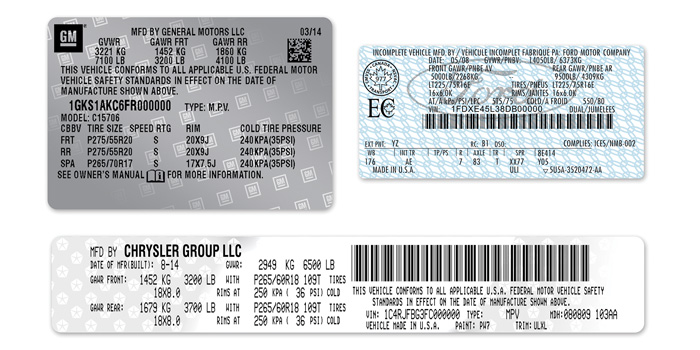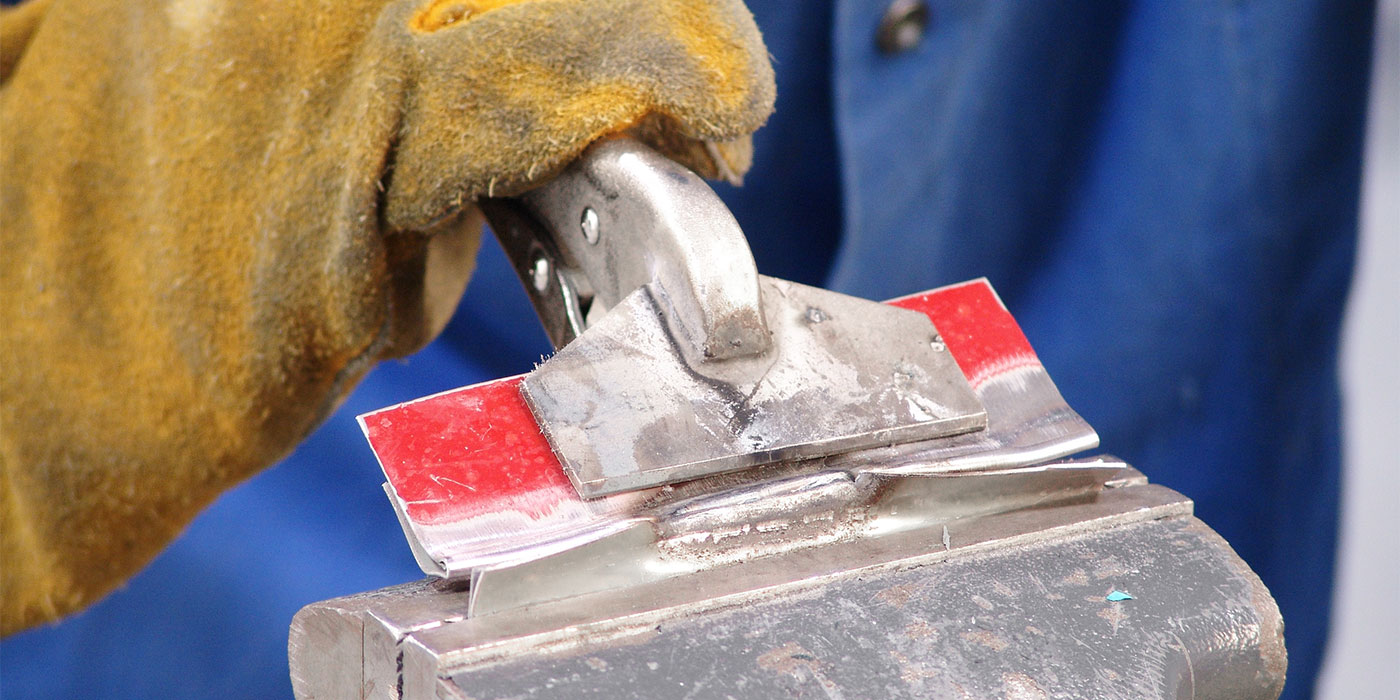
We don’t often give much thought to what vehicle badges and labels mean. We all know badging identifies the vehicle manufacturer, but badges and labels can be much more.
Changes to manufacturer requirements on badging have come about recently. And don’t forget about labels as they too have had some changes to them. It may be just a label, but certain regulations or laws may apply.
Badging
So let’s start with vehicle badging. Badging, in this case, is all the plastic or metal or any sticker on the outside of the vehicle that identifies a make, model or feature.
If a vehicle is badged correctly, an estimator should be able to know: manufacturer; model and series; possible package options; possible fuel options; hybrid electric; two-wheel, all-wheel or four-wheel drive.
There are a few more I could add, but I think you understand what can be ascertained about a vehicle just by knowing and identifying the badging.
We also get all this information when we enter the VIN number into most estimating systems, which is why knowing the meaning behind each type of manufacturer badge may not be so important.
Wait…as long as we use the VINs, badging is not as important? Herein lies the issue. What if you don’t badge the vehicle correctly? Who else uses badging to identify vehicles? Failure to replace or reinstall, even for a short while due to the badge being unavailable, could put someone at risk. With all the changes being made because of CAFÉ standards and end-of-life vehicle requirements, badging may be more significant than we know.
HEVs/EVs
The influx of hybrid electrics, all-electrics and a variety of fuels has brought new light to vehicle badging.
SAE (Society of Automotive Engineering) J2990 outlines the standardization of exterior markings. Although many issues are discussed, a significant portion of J2990 standardizes the exterior markings, called “badging,” currently used by manufacturers to advertise that their vehicle is a hybrid or electric vehicle. Up until the publication of this standard, there was no requirement for exterior badging on a hybrid or electric vehicle; three General Motors (GM) hybrids have no exterior hybrid badging at all.
To comply with the new standard, manufacturers now have two choices for badging. The preferred method requires a minimum of three exterior badges to clearly identify the vehicle as a hybrid or electric plug-in. One must be on the rear of the vehicle while the others can be along each side. The rear badging must be recognizable from 50 feet away. Failure to realize or comply with these standards could put first responders at risk.
So what if a hybrid Toyota badge for the tailgate on a Camry is not available before delivery? It may have broke while transferring or maybe it never got ordered. Do you send it out and put it on later? Could you see a problem occurring when there is a collision and the blue Toyota label isn’t there?
NGVs
What about the Honda NGV (Natural Gas Vehicle) label for lower fenders? Let’s say the owner doesn’t like them and wants them left off. Are they just advertising? What happens if a shop complies with the owner’s request and the vehicle is involved in another collision? First responders would be unaware of the danger.
Each unique fuel or powertrain vehicle has a set of procedures the first responders follow. The protocol depends on correct identification of the vehicle. The VIN doesn’t help them as they usually get crushed in a collision or cannot be accessed most of the time. The exterior labels and badging then become a critical component.
Estimating
A question does come about here: What should have been flagged at the time of the estimate on a vehicle branded or badged NGV that needed to be repaired? What should you consider for damage and painting? Knowing what the badge or exterior label means for repair can help reduce confusion on the estimate. For example, knowing if a sublet is needed to pull the tank from the vehicle if the shop is unsure of pressurized gas procedures. What are the welding requirements? All this could be discussed earlier in the repair process rather than scrambling later.
Labels
This brings us also to labels. Ask your estimators which vehicles have new HF1234yf refrigerant. Do they know who does and how to identify? How do you service the system? What’s the shop procedure?
Labels can identify some specialty issues we’ve seen come up recently. Normally, large shifts in vehicle designs or requirements were known in advance and changed universally in a given time frame. Hf1234yf has caused some problems. One is identifying the system. Hopefully, it’s seen or flagged when the VIN is entered into the estimating system. Estimators often take it for granted that the A/C is normal and the repair is the same as always. Then, the tech gets the vehicle and finds that the fittings and system is different. Now, you have to scramble to find a shop that can service the vehicle as you don’t have a separate machine to handle this.
By teaching estimators to do a quick check of either the estimate or the A/C label itself at the time of the estimate, you can better prepare your shop for timely sublets or procedures. This will help to maintain:
- Cycle time
- On-time vehicle delivery
- Communication between estimators and technicians
- Shop morale
Labels are often damaged during collision and repair. Not replacing them is not an option. There is a lot of valuable information on these labels, and there are regulations in place that dictate their removal and replacement. States that still do emissions or inspections might fail a vehicle due to missing or damaged labels. And if the vehicle needs repairs later down the road, missing labels can complicate things. Imagine not having a map for routing a serpentine belt.
A good example is VIN numbers or plates on the dash. We’ve all seen them damaged. What do the vehicle manufacturers says about repairing or replacing them? What are your states’ guidelines or laws for replacement? All states are different, but it all comes down to VIN tampering laws. Let’s say you’re in Minnesota working on a vehicle from Wisconsin. Which state’s laws apply? Do you notify the state? Does a state trooper need to be present? Does the state need to be involved? With my employer and the multiple states in which our shops are located, I’ve found that the answers are all across the board. There is no standardization. With that in mind, keeping up with your state laws or researching the state of vehicle registration before going forward may be in your best interest.
I was also made aware of some states’ laws on label replacement on doors or B-pillars. The information labels are purchased by shops to replace the tamper proof label. The label includes information such as the VIN and more on a tamper-proof tape. The tamper-proof tape required. Plus, what’s on the label is also regulated.
Note: As I travel doing industry training programs and reinspections for various companies, I see many shops put labels into a printer, copy them and then tape them on the vehicle. Do not do this as you’ll be breaking many regulations. Innocent as it may be, it’s wrong.
Besides the vehicle manufacturers, many companies offer the labels. Some states such as Wisconsin view the R&I and replacement of these labels as VIN tampering. In a lengthy conversation with a trooper in Wisconsin, I was informed that the label identifies the door or part as the factory original. By placing a label on any replaced or repaired door, you’re identifying the factory original part to the car and stating that the part was put on by the factory. Replacing the label is misrepresenting the part as factory original to that particular vehicle and is considered VIN tampering in that state. I’m hoping that interpretation of the law changes, but haven’t heard anything as of yet.













